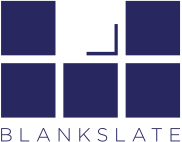News break. 8 out of 10 companies surveyed felt confident that they had a bullying and harassment policy that meets the bullying and harassment WorkSafe BC regulations in place and if there was an issue, their people would (somehow miraculously) know how to handle it.
There are big changes coming from WorkSafe BC for the management and training of bullying and harassment WorkSafe BC regulations in 2020. Meanwhile, if you’re an employer, or now ask yourself this. “Are you doing enough to protect your employees?”
According to the WorkSafe BC bullying and harassment regulations an Employer is expected to “Train supervisors and workers to recognize the potential for bullying and harassment, respond to bullying and harassment, and be aware of procedures for reporting and dealing with incidents and complaints of bullying and harassment” Having a policy without training individuals is not enough.
Creating a Safe Workplace
The Government of Canada (Human Rights Act of Canada) and Provincial governments organizations (Canadian Occupational Health and Safety Society) are committed to creating safe and productive workplaces for all Canadians and anyone employed in Canada. So much so that they have created policy and training requirements that employers must follow.
We believe every worker is entitled to a workplace that is free from harassment. It is known that positive practices related to diversity and inclusion increase creativity, motivation, retention and outputs . They also encourage psychologically safe interactions that support the mental health of the people who we work with. Each province has requirements for specialized Bullying and Harassment training. So how do we support our BC companies? What do companies and employers need to know in order to be compliant?
Are you compliant?
There is the minimum standard required by a company to be compliant with WorksafeBC. We want that for you, and we also encourage employers to shift the mindset. Ask the question: “How can we ensure that all workplace stakeholders from any background, experience and walk of life feel safe, supported and able to do their best work?”
Policies:
Educate yourself and your team on the WorkSafeBC regulations and develop policies not only to be compliant but that works to change behaviour through authentic communication.
Create policies. Clearly define and document the standards that you are committed to upholding at your workplace. Share a detailed process to follow ensuring they are aligned with federal and provincial regulations.
Train:
Start by approaching the mandatory training with the lens of ensuring compliance and declaring your organizations zero tolerance for behaviours that are harassing or discriminating.
Train everyone on how to respond when they are made to feel uncomfortable. Also include exercises to bring awareness to bias and blind spots. Training should outline the obvious (or what many assume should be obvious) criminal activities and legal regulations. It should also bringing awareness to behaviours that may exist in grey or nuanced areas. (A joke or statement that may be meaningless to one person and said without the intent to cause harm – could intimidate or humiliate others.) Educating the team on what to do if they feel they are being bullied or harassed.
Communicate:
Encourage Dialogue. Communicate and collaborate on what the shared definitions and parameters are. How they play out in real world situations? Empowering employees to take action when someone is out of line.
Encouraging open, clear and firm communication to discuss concerns as possible. Teach your team the process to allow safe and secure communication. Give your employees the tools to be about to talk with both their managers and each other in a safe, supported and secure way.
